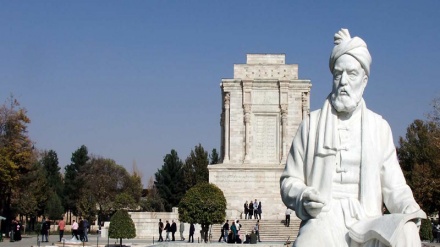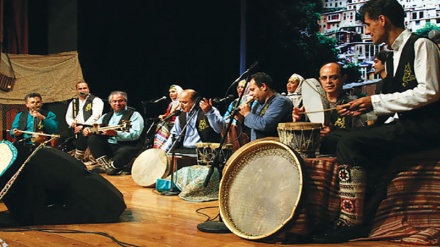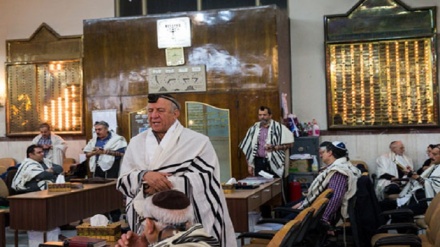Iran: Land of various ethnicities (5)
This episode will be dedicated to the cultural and social features of Kurdish ethnicities in Iran.
Kurds are among the most important ethnicities of Iran in terms of number. They comprise Mokry, Guran, Kalhor, Sanjabi, Qobadi, Za’faranluoo and Shadloo. They reside in a vast area extending from the Northwest of Iran to the Southwest. The capital cities of Kurdistan and Kermanshah provinces are Kurdish-inhabited and the west of Urumiyeh Lake is also the major residence of Kurds. Of course, part of the Kurds live in North Khorasan province Northeast of Iran. These Kurds are called Kormanji. The Kurds are from the same Aryan race. In terms of linguistic features they can be considered purer and more genuine than other languages. Moreover, Kurdish people have preserved more physical characteristics of their Iranian ancestors.
The Kurdish language is a survivor of genuine Iranian languages. This language is divided into two main dialects: the Saneh Kurdish and Mokry Kurdish. French researcher of the 19th century, Jean-Jacque de Morgan, describes the Mokry Kurds as follows: They are of pretty race with an average stature, wide shoulders, protruded chest with well-built limbs and small heads. They have fairly wavy hair, tall forehead, aquiline nose, big black eyes, profuse eyebrows, protruded and red cheeks. These people are mostly swarthy with black sparse beard.
During the past half a century many developments have occurred in the residence of Kurds and their lifestyle so that a considerable number of the migrating Kurds were attracted to cities.
Geographically the Kurdish clans can be categorized in two groups:
- Kurdish clans of Azarbaijan
- Kurdish clans of Kurdistan and Kermanshah
The first group of Kurdish clans include: Jalali (around Makou), Milan (in Khoy), Salas (north of Salmas), Shakak (south of Salmas), Beikzadeh (in Urumiyeh), Qara papakh (south of Naqadeh), Mangur (in Mahabad). Most of these clans coexist with Turks.
The second group of Kurdish clans resides in Kurdistan and Kermanshah provinces including: Saqqez, Marivan, Oraman, Divandareh, Sanandaj, Kamyaran, Javanrood, Sonqor Kolyai Ahmadvand, Guran Qalkhani, Sanjabi, Babakhani, Fat’h Ali Beygi, Komasi and so on. The Sanjabi clans, residing in Mahdasht region of Kermanshah province, have urged agriculture and sedentary way of life more than others. Hence, today many of the old pastures of the region have been cultivated and the 160 villages in the area are considered among the important storehouses of cereals in Iran. Around the cities of Saqqez, Baneh and Sardasht a few clans live one of the most famous ones being the Jaaf clan. In general, the migrating and sedentary Kurdish clans and tribes have very common features. Their houses, games, customs, traditions and folklore are almost the same. They have many beautiful points which you will hear after the music.
The Kurds, like other Iranian ethnicities, enjoy special pretty clothes which every Kurd usually observes as a symbol of the past culture.
Clothes form a symbolic part of every ethnicity. In view of this, the clothes of Kurds are similar altogether but they differ according to the areas and social classes. The Kurdish ethnicities reside in Iran, Iraq, Turkey and Syria each of which has its own beautiful clothes complying with the climatic characteristics of the region.
Ms. Nazanin Esfandiyari, Iranian researcher, elaborates on the clothes of these people:
The local clothes of men include garment, head cover and shoes. Making and usage of each of these items differ depending on the season, type of work, way of living, ceremonies and feasts. Although the clothes of different regions are varied all of them are similar in covering the body. In general, the clothes of men are as follows:
Chukheh: a vest-like garment covering half the body from the waist to the neck. It is made of goat wool and is one of the old clothes of Kurds.
Faranji (Faraji): a garment made of felt with long sleeves.
Patul: loose trousers with tight bottoms. It is called raanak, too.
Maleki: a vest-like garment. It is collarless and tied with buttons.
Lafkeh Sorani: It is a shirt with long and wide sleeves and a triangular part at the end of the sleeve which is usually wrapped round the wrist.
Shawl (Pashtwen): It is a 3-10 meter piece of cloth tied round the waist over the clothes.
Dastar (Dashlameh): It is a head cover which is used by men as a cap. It has other names such as Mandali, Rashti Sarvin.
Pich va Kulav: Kulav is the cap which the Kurdish women weave it finely and delicately with the genuine Kurdish designs. It is usually black and white and made in long and flat forms. It is noteworthy that according to a Kurdish belief a man’s head shouldn’t be uncovered. Pich is also a black and white handkerchief and is wrapped round the cap on the head.
Kelash: These are white shoes that are very finely woven from rug strings, silk and leather. Due to the materials used they prevent the feet from having bad smell and even keep the feet cool. These shoes cannot be used in cold and rain.
Now let us make you familiar with some of the dishes of the Kurdish people. There are two groups of dishes among the Kurds. The first group is the summer dishes including:
Nan va Du. It is the local bread and Dugh or yogurt and water. This dish is very customary among the nomads and villagers.
Kalana: This dish is made of dough, onion, butter and a kind of aromatic herb called Pichak. It is very energetic.
Sir o Mas: To make this dish, bread and garlic are poured in a kind of Dugh called Duchen and then hot cooking oil is poured on it.
Plaw: This dish is made of rice with lentil or raisin.
Qawrma: This dish is made of small pieces of meat fried with onion.
Winter dishes include:
Dovina: Wheat grits are cooked and sour Dugh (yogurt and water) with aromatic herbs are added to it. This dish is called Tarkhineh in Kermanshah and Sanandaj.
Shalam: Wheat grits are cooked with turnip and pomegranate.
Niske: This is a kind of soup made of lentil.
Bala cha niske: This dish is made of lentil and pumpkin.
Sife o Run: It is made of cooked potato and fried onion.
Plaw Gusht: This dish is made of rice and meat and served on the days of festivity especially Nowruz.
RM/ME


